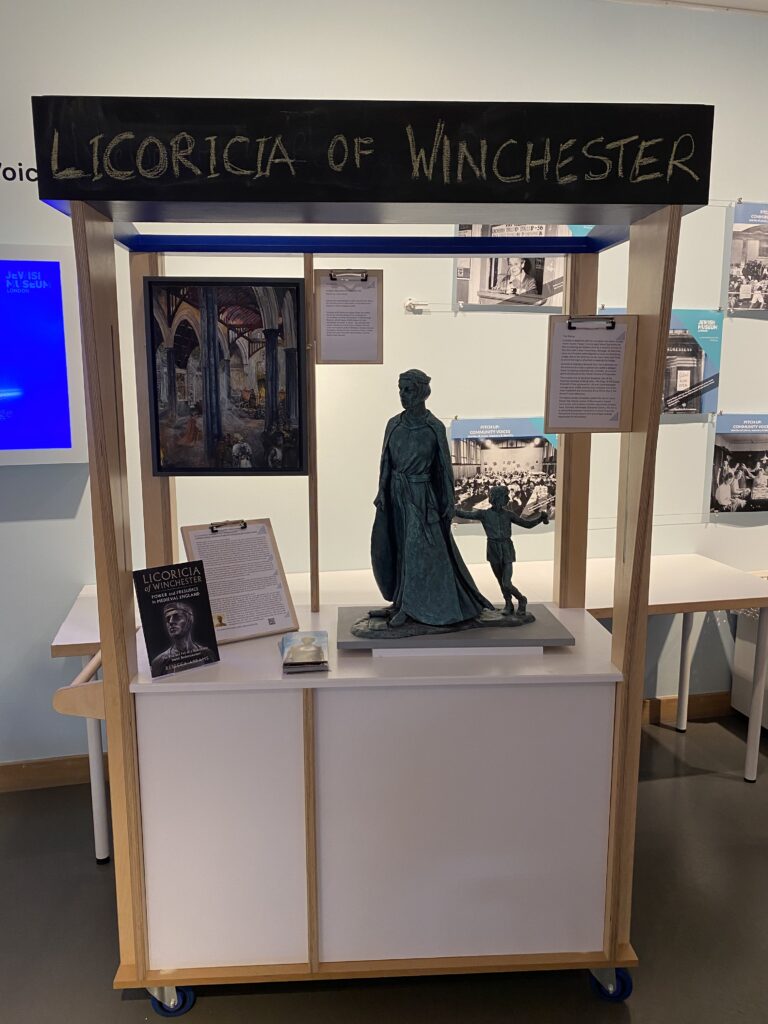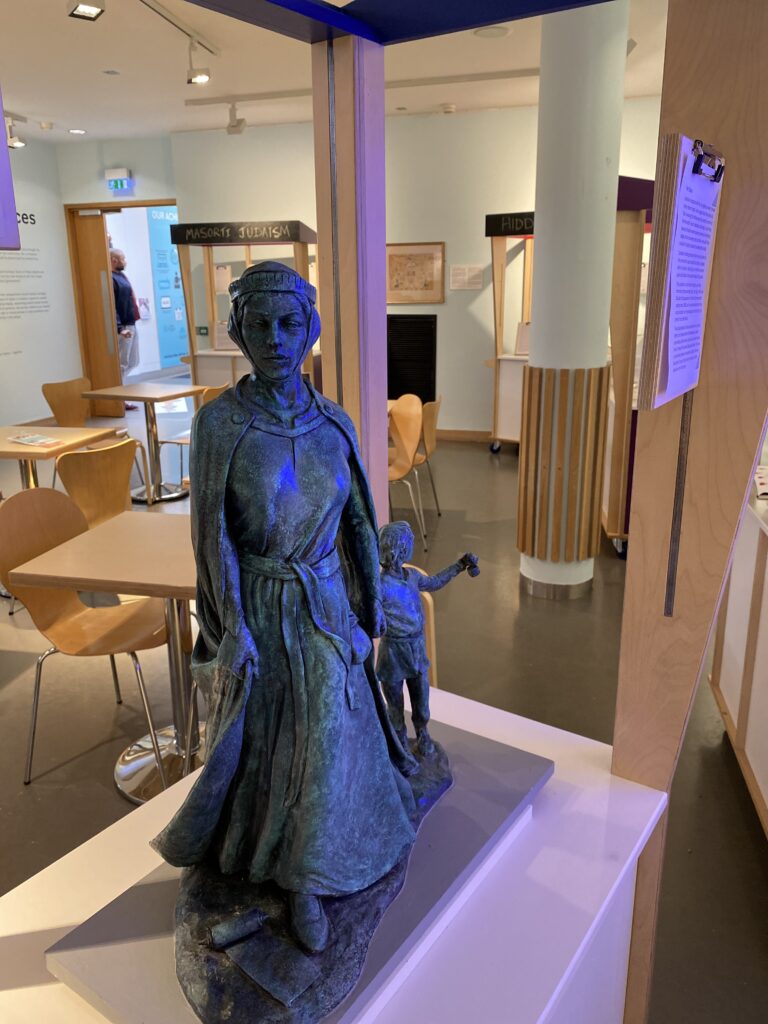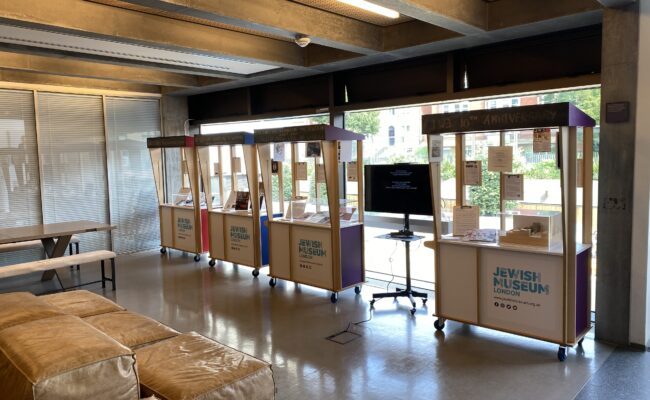A conversation between Jewish Museum London & William Carver, Secretary/Treasurer, Licoricia of Winchester Appeal

Museum: What is the Licoricia project about?
Carver: Well, we started the project about 10 years ago and it looks at the history of the medieval Anglo-Jewish community and its lessons for today. Licoricia is a fascinating C13th lady who married David of Oxford after her first husband had died perhaps because of a blood libel. The king at that point could dip his at will into Jewish assets, and he took over £5,800 from them both. £10 was enough to build a fully-fitted warship. This money helped build the Edward the Confessor shrine in Westminster Abbey, the heart of Henry III’s Abbey. Despite all the prejudice and difficulties of the time, Licoricia was able to run a very successful business and become close to Henry III. So she’s an inspiration for women today who even after 800 years often experience a glass ceiling in their lives. She was highly educated, a very important Jewish characteristic, and that was very important for her success. We also wish to promote education as a route to personal success.
13th Century Jews were restricted in what they could do and all they owned belonged to the King. They were allowed in Britain on the basis that the king could tax them as much as possible. Jews could however undertake lending at interest to Christians, (something that the church increasingly discouraged as the 13th century went on). So Jews were in essence corralled into this activity and exploited in it. Few Jews were actually involved in high-finance and most were very poor like everyone else.
Museum: What’s the impact been on the community?
Carver: A few had concerns about us putting up a statue but the majority were supportive; we believed that Licoricia represented an opportunity through her interesting history and her links for today to actually put up a Jewish woman who was feisty and fought her corner, and was not someone who could be taken for granted. We offered the opportunity to Hampshire county council who were supportive of the idea. We’ve been bowled over by the community backing for this project, both among Jews and non-Jews.
Museum: What are your hopes for its legacy now that is up?
Carver: First, the statue’s bronze so will last for many generations. It’s by Ian Rank-Broadley who used his Jewish daughter and his grandson as models for the statue. Second, we have KS3 lessons developed by Hampshire County Council, available to schools across the UK, which talk about the difficulties of life for 13th century Jews, and encourages people to examine themselves, look at how we treat minorities today, and how we are prejudiced ourselves. It’s a ground breaking way of using a medieval story.
The third legacy is the book by Rebecca Abrams that goes into detail about the history of the time, looking at it from a Jewish perspective, looking at the culture, looking at the politics, looking at society. It has fascinating illustrations including Anglo-Jewish manuscripts from the 13th century. We hope that this will carry our message into places that we haven’t yet reached and into the future to do some good.
For more information visit: www.licoricia.org

The Statue
Licoricia is depicted with her youngest son Asher (whose name means ‘happy’) who is aged about five years old. She is wearing the clothes worn by a wealthy woman of her time with a linen headdress. Although, at that time, Jews and Muslims were required to wear an identifying badge, she is not wearing one as many Jews paid fines to avoid the stigma attached to wearing the badge.
Licoricia is holding a demand from the authorities for the community to pay a special tax (called a tallage). Asher is holding a spinning top, a dreidel, an ancient game still played at the Jewish festival of Chanukah.
The sculpture is by Ian Rank Broadley, one of the foremost scultops working today. His effigy of HM Queen Elizabeth II has appeared on UK and Commonwealth coinage since 1998, and his work includes one of the most important war memorials since World War II, the Armed Forces Memorial.
The statue proper is located outside the Arc on Jewry Street, the historic centre of Winchester’s Jewish community, and is where Licoricia was known to have lived. Formerly Winchester Discovery Centre, The Arc is a partnership between Hampshire Cultural Trust and Hampshire County Council and is a unique cultural destination for Winchester

The painting
Licoricia before Henry III in the Great Hall – Painted by Lucille Dweck
Dweck was commissioned to paint Licoricia with Henry III in the Great Hall in Winchester, on the basis that a picture is worth a thousand words.
Educated at St Martins and Byam Shaw, her artistic career has included being winner of several art competitions including ‘Pacesetters’ in Peterborough Museum, My Art Space, NYAXE Gallery NY, and the‘Refresh Art Award’ in 2019. She has been the Artist in residence at the London Hospital, and has mural commissions at West Middlesex Hospital, Central Foundation School for boys, The Frame Factory (Talbot Road), De Lucia Restaurant (Bond Street), and The Mayfair Club (Mayfair).
